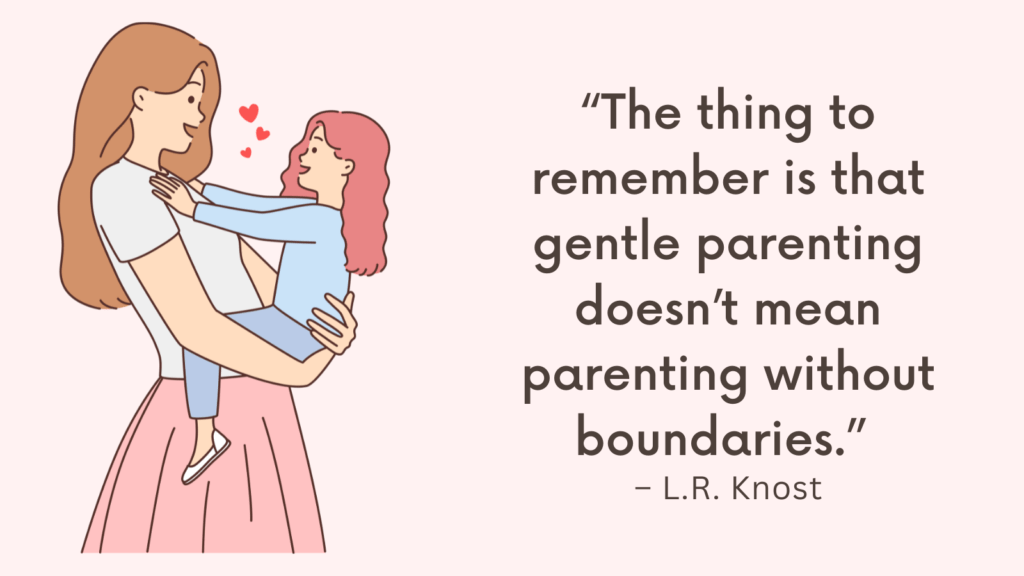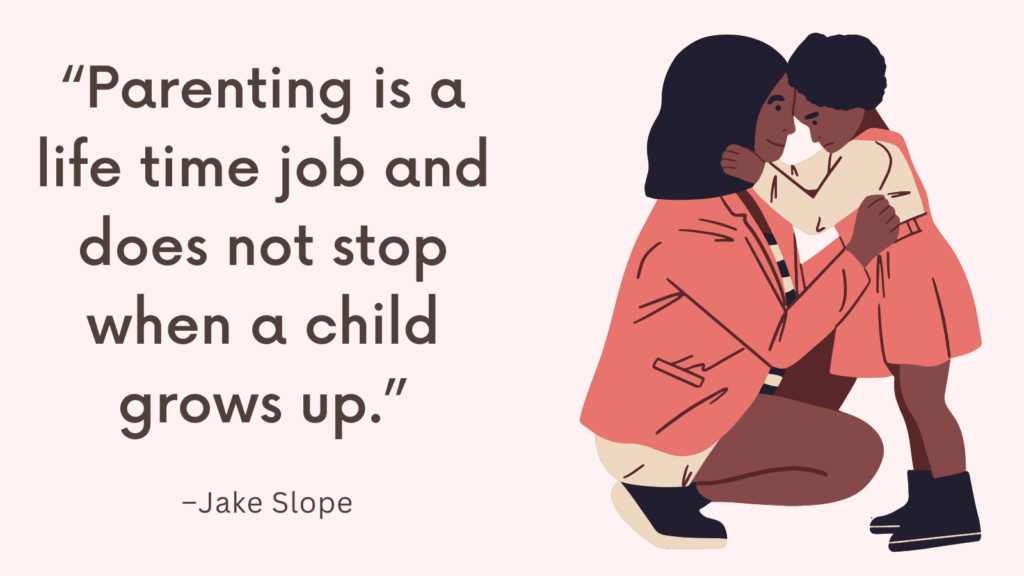In this post, you’ll learn how to deescalate a child.
What Does It Mean to Deescalate a Child?
Deescalation for children refers to the process of calming a child down and reducing their emotional intensity or aggression during a conflict or challenging situation.
It involves using techniques and strategies to help the child regain control of their emotions and behavior, promoting a peaceful and safe environment.
Some examples of deescalation techniques for children include deep breathing, counting to 10, and expressing feelings through art or music.
Parents and caregivers can also use deescalation strategies such as taking a break from the situation, validating the child’s feelings, and using a calm and soothing tone of voice.
Deescalation is an important tool for children to learn because it can help them avoid aggressive or violent behavior, improve their communication skills, and build more positive relationships with others.
Related: Am I A Helicopter Parent Quiz
Why A Child May Need Deescalation?
Children may require de-escalation when they feel overwhelmed, frustrated, or angry and are unable to control their behavior.
This can happen for various reasons, such as feeling misunderstood, having unmet needs, or experiencing sensory overload.
For instance, a child with sensory processing issues may become agitated and upset in a noisy environment, leading to a meltdown.
Or, a child who feels anxious about a test or social situation may lash out or shut down. In these instances, de-escalation techniques can help to calm the child, reduce stress levels, and prevent further escalation.
Common Triggers For Children’s Emotional Outbursts
There are several common triggers for children’s emotional outbursts, including:
1. Frustration: When children are unable to accomplish a task or communicate their needs effectively, they may become frustrated and have an emotional outburst.
2. Fatigue: Children who are tired or sleep-deprived may be more prone to emotional outbursts.
3. Overstimulation: If children are in a noisy or chaotic environment, they may become overwhelmed and have a meltdown.
4. Lack of routine: Children often thrive on consistency and routine, so changes in their schedule or environment can lead to emotional outbursts.
5. Anxiety and stress: Children who are experiencing anxiety or stress may have more frequent emotional outbursts, as these emotions can be difficult to manage.
6. Hunger or thirst: Children who are hungry or thirsty may become irritable and have more emotional outbursts.
7. Sensory issues: Some children may be sensitive to certain textures, sounds, or smells, which can trigger emotional outbursts.
It’s important to note that every child is unique, and what may trigger an emotional outburst for one child may not affect another.
Related: Helicopter Parenting: Pros and Cons of Over-Parenting
How to Deescalate A Child?
#1. Recognize Signs of Escalating Behavior
When dealing with an escalating child, it is crucial to recognize the signs of escalating behavior in order to effectively deescalate the situation.
Here are some common signs of escalating behavior in children:
1. Verbal aggression: The child may start using harsh or threatening language, shouting, or yelling.
2. Physical aggression: This can include hitting, kicking, biting, or throwing objects.
3. Increased irritability: The child may become easily annoyed or angered by even minor frustrations.
4. Resistance to authority: They may start challenging rules, refusing to follow instructions, or arguing with adults or peers.
5. Withdrawal or isolation: Some children may withdraw socially, exhibit a lack of interest in activities they previously enjoyed, or isolate themselves from others.
6. Intense emotional reactions: There may be a noticeable increase in emotional outbursts such as crying, tantrums, or meltdowns.
7. Hyperactivity or restlessness: The child may struggle to stay still, display impulsive behaviors, or have difficulty focusing on tasks.
8. Destruction of property: They may intentionally damage or break objects as an expression of frustration or anger.
9. Defiance: The child may openly defy rules, engage in power struggles, or deliberately provoke confrontation.
10. Heightened anxiety or fearfulness: Some children may exhibit signs of anxiety, such as increased worry or fearfulness, avoidance of certain situations, or physical symptoms like stomachaches or headaches.
It’s important to note that every child is unique, and these signs may vary from individual to individual.
Related: Is My Child Having Night Terrors Quiz
#2. Encourage Your Child To Express Their Feelings
Children often struggle with understanding and managing their emotions, leading to heightened frustration or anger.
By creating a safe and supportive environment for them to express themselves, you can help alleviate their emotional distress.
Encourage your child to use words to describe how they are feeling, allowing them to identify and communicate their emotions.
For example, instead of simply saying “I’m mad,” they can learn to express themselves more specifically by saying “I feel angry because my friend took my toy without asking.”
This not only helps them understand their emotions better but also gives you the opportunity to validate their feelings and provide appropriate support.
Related: Why Would A Child Need Occupational Therapy?
#3. Use Reflective Listening And Paraphrasing
Reflective listening involves actively listening to what the child is saying and then responding by summarizing or reflecting back their thoughts and feelings.
This lets the child know that you are truly hearing them and understanding their perspective.
For example, if a child says, “I hate school, I never want to go back,” you could respond with, “It sounds like you’re feeling really frustrated and upset about going to school.”
Paraphrasing, on the other hand, involves restating what the child has said in your own words.
This helps to clarify any misunderstandings and shows the child that you are engaged in the conversation.
For instance, if a child says, “I don’t want to eat broccoli, it’s gross,” you might say, “So you’re saying that you don’t like the taste of broccoli.”
By using these techniques, you can create a safe and supportive environment for the child, encouraging them to open up and express their emotions.
It also shows the child that you value their opinions and are willing to listen, which can help to build trust and nurture a positive relationship.
Related: Does My Child Need Occupational Therapy Quiz
#4. Put Yourself In Your Child’s Shoes
Taking the time to understand their perspective can greatly help in diffusing tense situations and fostering a healthy parent-child relationship.
By empathizing with your child, you demonstrate that you genuinely care about their feelings and experiences.
This can create a safe space for them to express themselves and ultimately lead to more effective communication.
To begin, it is important to approach these situations with patience and understanding.
Imagine how you would feel if you were in your child’s position.
Think about what might be causing their distress – it could be fatigue, hunger, stress, or even a simple desire for attention.
By considering these factors, you can better respond to their needs and address the underlying issue.
For instance, let’s say your child throws a tantrum because they are not allowed to have a second piece of candy before dinner.
Rather than immediately dismissing their feelings, try to understand their perspective.
You might empathize by saying, “I know you really enjoy candy, but right now we need to prioritize having a balanced meal for your overall health. We can have another treat later.”
This acknowledges their feelings while also setting clear boundaries.
It’s essential to actively listen to your child during these moments.
Give them your full attention and validate their emotions.
Let them know it’s okay to feel upset, angry, or frustrated, but also guide them towards appropriate ways to express these emotions.
Encouraging open dialogue and providing alternative solutions can help them learn to regulate their emotions in a healthier manner.
Related: Is My Child Gifted Quiz
#5. Validate Their Emotions Without Judgment
Validating a child’s emotions means acknowledging and accepting their feelings as real and important, even if we may not fully understand or agree with them.
This approach helps build trust and foster open communication.
To validate a child’s emotions, actively listen to what they are saying and reflect it back to them.
For example, if a child is feeling frustrated because they can’t figure out a puzzle, you can say, “I can see that you’re feeling frustrated right now because the puzzle seems difficult.”
Avoid dismissing their emotions or jumping straight to problem-solving. Instead, provide reassurance and support, letting them know that it’s okay to feel the way they do.
Related: Is My Child Highly Sensitive Quiz
#6. Empower Your Child Through Decision-Making
When a child is upset or agitated, their ability to think logically and calmly diminishes.
By giving them control over small decisions, such as choosing what activity to do or what snack to eat, you are allowing them to regain some sense of power and control in the situation.
This can help alleviate their frustration and diffuse the situation.
For example, if a child is having a tantrum because they don’t want to leave the playground, you could give them a choice between leaving now and getting ice cream on the way home or leaving in five minutes and getting ice cream when they get home.
This gives them a sense of control while still enforcing boundaries and consequences.
It’s important to remember that children have their own thoughts and feelings, and providing them with opportunities to make decisions can help boost their confidence and independence.
Related: Best 10 Gentle Parenting Books
#7. Divert Their Attention Away From The Trigger
When a child becomes upset or agitated, it’s crucial to provide them with alternative stimuli that can help shift their focus and gradually calm them down.
One way to do this is by offering engaging activities or toys that capture their interest.
For example, if a child is upset over not getting a desired toy, redirecting their attention towards a different toy or game can distract them from the initial trigger and help them move on from their frustration.
Additionally, talking to the child about something completely unrelated to the issue at hand can also be helpful.
Sharing a funny story or discussing a topic they are interested in can effectively redirect their thoughts and help diffuse the situation.
Remember, it is important to remain patient, understanding, and empathetic throughout the process.
By diverting a child’s attention away from the trigger, we provide them with an opportunity to calm down and regain control of their emotions.
Related: Best 10 Book Ideas For Kids
#8. Use Calming Techniques
When dealing with a child who is feeling upset or agitated, using calming techniques can be an effective way to deescalate the situation and help them regain control of their emotions.
One important technique is deep breathing, which can help both children and adults calm down quickly.
Encourage the child to take slow, deep breaths, counting to four as they inhale and then exhale.
This simple exercise can help slow down their heart rate and bring a sense of calm.
Another technique is offering a safe space for the child to retreat to when they need a moment to themselves.
This can be a designated quiet area with soft cushions or toys that the child finds comforting.
By providing this space, you are giving them the opportunity to self-regulate and regain composure.
Additionally, using a soft and soothing voice when speaking to the child can also make a significant difference.
Related: Best 10 Children’s Books About Self Esteem
#9. Control Your Own Emotions During Challenging Situations
When faced with a child who is experiencing an emotional outburst or challenging situation, it is crucial to control your own emotions in order to effectively deescalate the situation.
Children often look to adults for guidance and reassurance, so maintaining a calm and composed demeanor can help create a safe and supportive environment.
Take a moment to pause and gather yourself before responding to the child’s behavior.
By doing so, you are modeling self-regulation and showing the child that their emotions can be managed in a healthy way.
Related: Best 8 Books For Stay At Home Mom
#10. Model Appropriate Behavior For Your Child
This means showing them how to control their emotions, communicate clearly, and solve problems constructively.
When you model these behaviors, you provide your child with a roadmap for how to behave and respond in various situations.
For example, say your child becomes upset because they are having difficulty with their homework.
Instead of escalating the situation by getting frustrated or yelling at them, try modeling appropriate behavior.
Sit down next to them, ask them what they’re struggling with, and help them work through the problem.
If you don’t know the answer, look it up together.
By doing this, you can show your child that it’s okay to ask for help and that working through challenges is a normal part of life.
Another way to model appropriate behavior is to take care of yourself.
If you’re feeling stressed or overwhelmed, take a deep breath and step away for a few moments.
Modeling self-care shows your child that taking a break when things get tough is essential, and it’s okay to prioritize your mental health.
With time, your child will internalize these lessons and be better equipped to handle challenging situations in the future.
Related: Best 10 Pregnancy Books For Dads
#11. Reinforce Positive Behavior
Positive reinforcement involves rewarding good behavior rather than punishing bad behavior.
This can help the child feel appreciated and valued, encouraging them to continue exhibiting good behavior in the future.
For instance, when a child becomes upset or throws a tantrum, it is important to remain calm and not escalate the situation.
Instead, try to redirect their attention to positive activities or behaviors.
You can also provide verbal praise or small rewards such as stickers or tokens for good behavior such as sharing or following instructions.
By acknowledging and rewarding positive behavior, children will begin to understand what is expected of them and learn to adopt healthy ways of expressing their emotions.
#12. Seek Professional Help If Needed
When it comes to deescalating a child, seeking professional help should always be considered if needed.
Sometimes, despite our best efforts, a child may experience intense emotions or display challenging behaviors that require additional support.
Professional guidance can provide valuable strategies and techniques tailored to the child’s specific needs.
For instance, a child psychologist or therapist can help identify underlying issues or triggers contributing to their behavior and work with both the child and parents on implementing effective coping mechanisms.
Additionally, professionals can offer a safe space for children to express their feelings and learn healthy ways to manage their emotions.
It is important to remember that seeking help does not mean we have failed as parents or caregivers but rather shows our commitment to providing the best possible care for our children.
By involving professionals, we empower ourselves with knowledge, tools, and resources to create a harmonious environment that supports the child’s emotional well-being.
Related: Best 10 Self Help Books For Teens
Conclusion
Deescalating a child’s emotions and behaviors requires a gentle and patient approach to help them regain control and find solutions to their problems.
Remember that each child is unique, so it is essential to approach deescalation techniques with flexibility, adapting them to the specific child and situation at hand.




